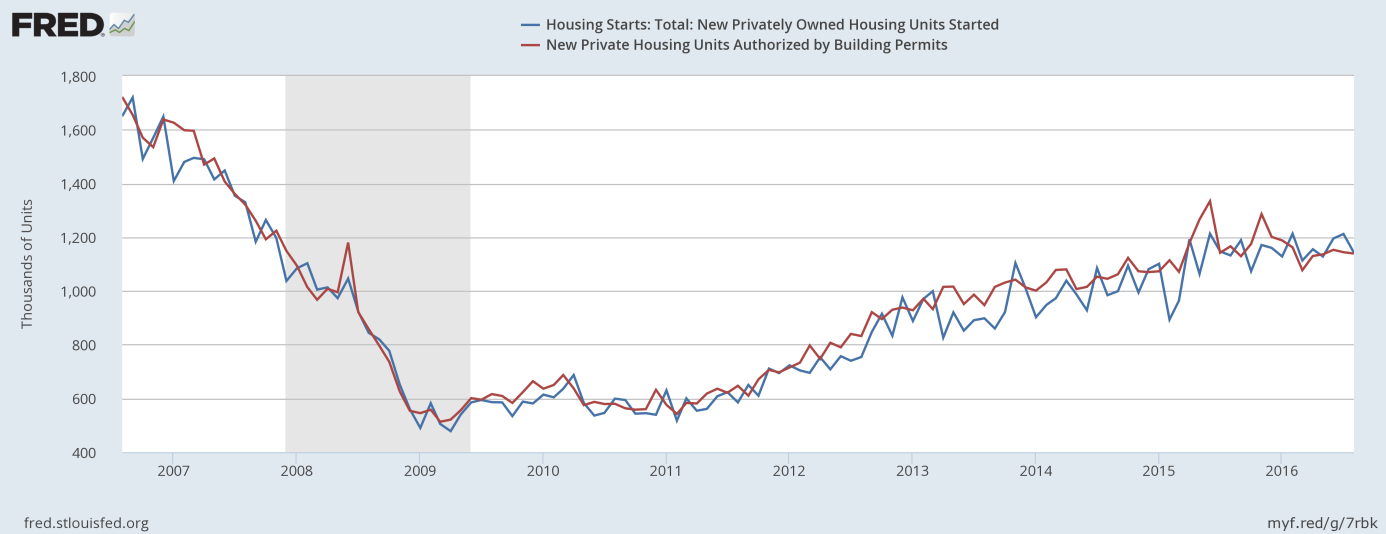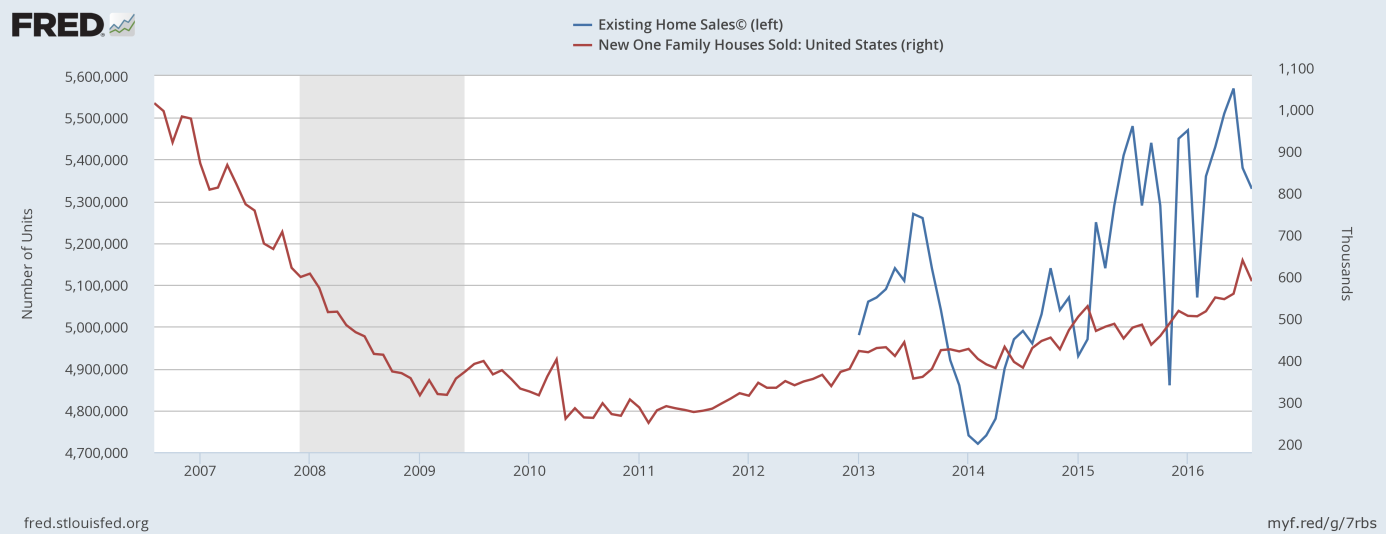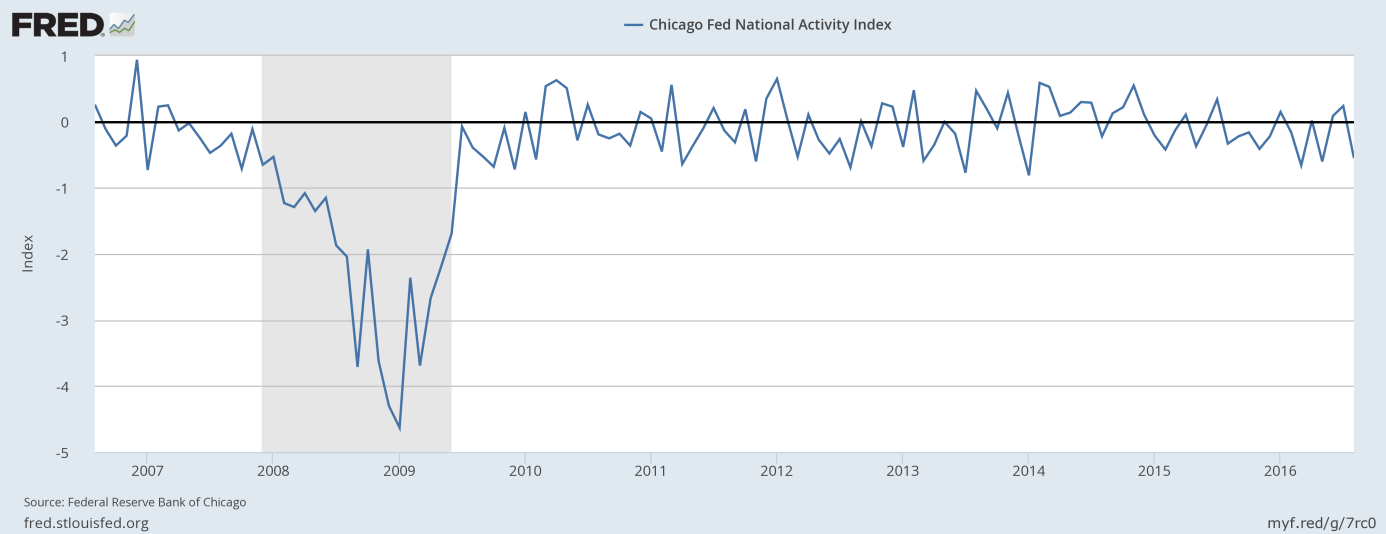What does last week's data on housing and manufacturing mean for the gold market?
We recently focused on the last FOMC meeting and the presidential debate. Now we'll look at the latest U.S. economic data. August was generally a negative month for the housing market. Housing starts declined 5.8 percent on a monthly basis and 0.9 percent over the year. Permits were flat in August when compared to July, but 2.3 percent lower over the twelve months. Existing-home sales also declined 0.9 percent in August, which was the second monthly decline in a row. The only bright spot was new-home sales, which fell 7.6 percent in August. However, the decline was smaller than expected. Investors have to remember that July marked the highest number since late 2007. Generally speaking, the broader trends remain rather positive, as one can see in the charts below.
Housing starts
Existing- And New-Home Sales
U.S. manufacturing is certainly in much worse shape than housing. On Thursday, the Chicago Fed National Activity Index fell to a negative 0.55 for August from a slightly downwardly revised positive 0.24 for July. Hence it's another measure that paints a negative picture of U.S. national economic activity. However, it does not seem to be the most reliable indicator, as it has flirted with recessionary levels since the end of the Great Recession.
The Chicago Fed National Activity Index
The weakness in the manufacturing sector was so big that it pushed leading indicators into negative territory in August, as the Conference Board’s leading economic index fell 0.2 percent. Last but not least, the Markit flash U.S. manufacturing purchasing managers’ index declined from 52 in August to 51.4 in September (however, the rate of the expansion of the U.S. service sector picked up during September).
To sum up, recent data shows that the housing sector is recovering from the depth of the crisis, while manufacturing is still facing important problems and flirting with recessionary levels. Therefore, recent pieces of news should not move the gold market significantly. The forthcoming reports on durable goods orders, personal income and outlays and nonfarm payrolls are likely to exert a greater impact. Generally, the economic conditions remain fragile. As a reminder, the Fed downgraded its forecasts of real GDP growth this year. And the PMI surveys suggest that the U.S. economy will grow just 1 percent in the third quarter. Hence, it seems that there is more upside potential in the gold market in the long term. However, the price of gold dropped on Tuesday, which could be due to the rise in the index of consumer confidence in September to the highest number since the Great Recession. Or, it could be related to stronger risk appetites in the wake of a perceived Clinton victory in the first presidential debate.
It is worth noting that the rise in consumer confidence may decrease Trump’s odds as he criticizes Democratic economic policies. If people are more confident in the economy, they're more likely to vote for the status quo.



